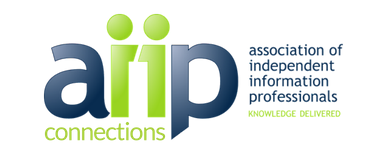Strategic Doing, Not Just Strategic Planning

A recent conversation on the AIIP-L discussion list about the importance of setting aside time for business planning moved into a discussion of time-management techniques that AIIP members have found helpful for blocking out strategic planning time. Like many others, I set aside one full day a year—or every six months, if I am pivoting my business—to assess where I am, where my best clients are, what I’m enjoying the most, and what I want more of over the next year. After reflection, I come up with the measurable goals that I will achieve if I put my strategic plan in place.
But that’s just the start of my strategic planning; to actually achieve my goals, I need an action plan. Kim Dority of Dority & Associates, who is part of my informal cadre of accountability buddies, recently shared with me her thoughts about making the shift from creating to executing a plan. It was somewhat humbling to be reminded that an insightful market analysis, a well-thought-out SWOT analysis, and a 10-point plan aren’t enough to ensure that I succeed in accomplishing my goals. As Kim told me, I also need to create the environment that supports my efforts to complete my action items – something with accountability as an integral part of the plan.
To get from an aspiration to an accomplishment takes three critical steps:
- I must identify my specific, measurable goal – something important enough to get my attention and focus.
- Next, I must identify the strategies and broad approaches that will enable me to reach my goal.
- And finally, I need to identify the specific actions to be taken for each strategy and the timeline for each action. Only then have I designed a plan that includes the steps to accomplish my goal.
So, for example, say that one of my business goals for the next 12 months is to increase my revenue from lead generation work by 25%. My strategies for achieving that goal might include:
· Raising my profile among my target audience of marketing directors.
· Expanding lead generation projects with existing clients.
· Learning what else I can add to my lead generation services that my clients would value.
For each of those strategies, I need specific tactics to ensure I will succeed in increasing my lead generation revenue by 25%. For the first strategy of raising my profile among my market, I might include tactics such as:
- For the next four weeks, spend three hours a week identifying, connecting with and interacting with marketing directors in LinkedIn. Double the number of my connections with marketing directors.
- Within the next week, set up a schedule to post on social media once a week, with at least 25 engagements per post.
- At the end of two months, evaluate the posts to determine which ones get the best engagement; decide next steps.
Notice the distinctions between my goal, which spells out what I want to accomplish; my strategies, which are specific approaches that will enable me to achieve my goal; and my tactics, the action steps that, because they specify a timeline and measurable results, have built-in accountability.
And speaking of accountability – I always benefit from having accountability buddies; they offer me a fresh perspective and useful insights. AIIP members may wish to explore peer to peer support options on the AIIP website.
Mary Ellen Bates has been an infopreneur since 1991. She provides strategic decision-support services for clients and free coaching to fellow infopreneurs. See more at BatesInfo.com or contact her at mbates@batesinfo.com or +1 303 772 7095.





